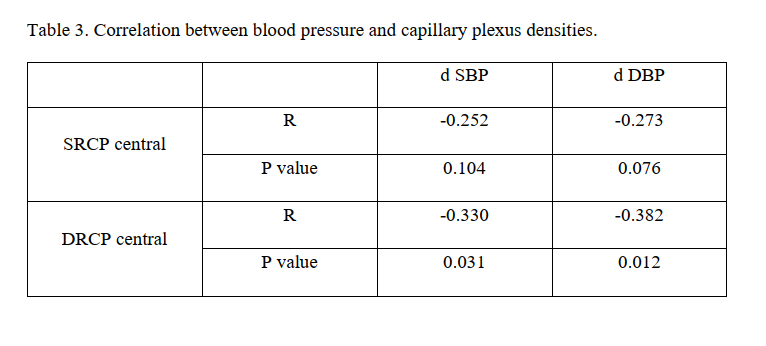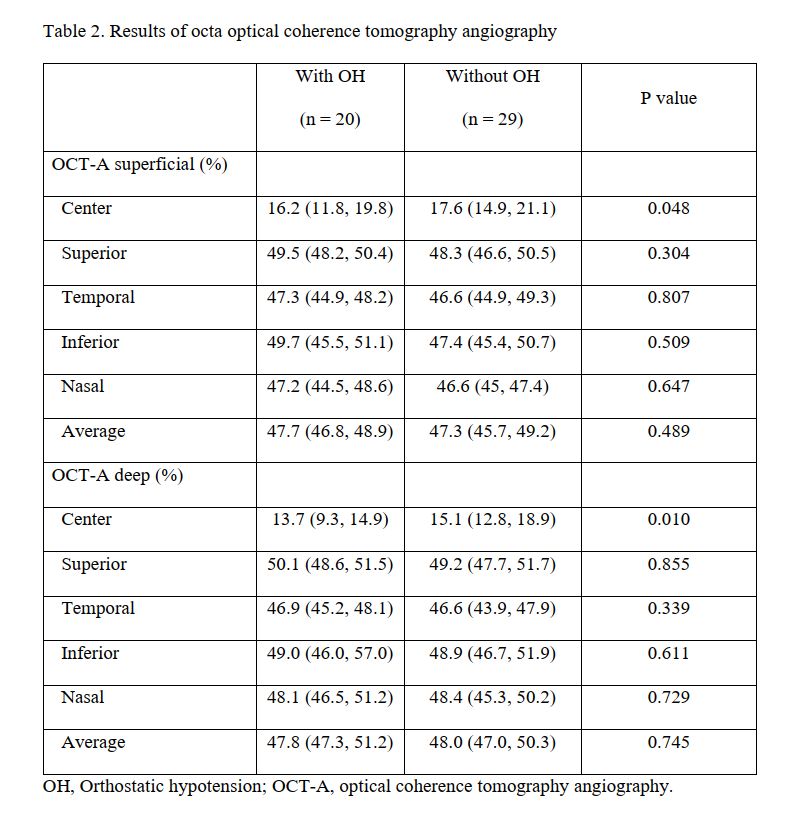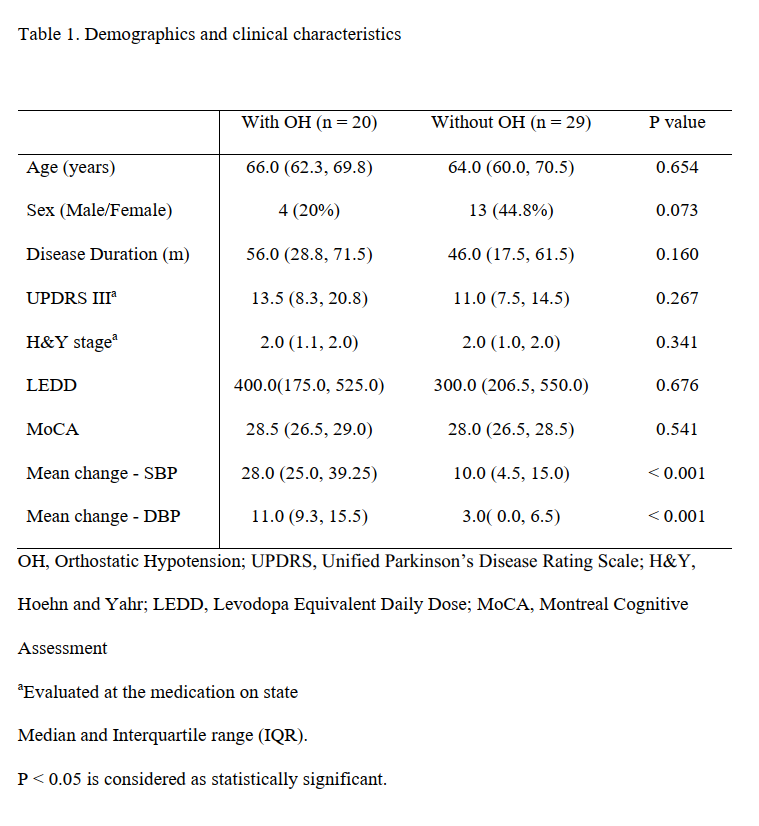Category: Parkinson's Disease: Non-Motor Symptoms
Objective: In the present study, we investigated difference of microvasculature of Parkinson’s disease (PD) patients with orthostatic hypotension (OH) and without OH, using optical coherence tomography angiography (OCTA).
Background: OH is a common non-motor symptoms in PD, even in the early stage of disease. OH cause a recurrent hypoperfusion episodes and might damage on microvasculature. OCTA is non-invasive method and used for evaluating retinal microvasculature and it is a sensitive tool to detect microvascular change of the various disease including diabetes, systemic lupus erythematosus. Therefore, OCTA can help to detect microvascular damage in PD patients with OH.
Method: We recruited a total of 49 PD patients and performed OCTA and head-up tilt test (HUT). OH was defined as a fall of at least 20 mmHg in systolic blood pressure (SBP) and/or a 10 mmHg fall in diastolic blood pressure (DBP) within 3 minutes of HUT. Demographics, unified PD rating scale III (UPDRS III), Hoehn and Yahr stage (H&Y), levodopa equivalent daily dose (LEDD), Montreal Cognitive Assessment (MoCA) were investigated.
Results: There were no differences in age, sex, disease duration, UPDRS III, H&Y stage, LEDD and MoCA. Median of changes in SBP and DBP during the HUT were 28 and 11 in the OH group (OH+), and 10.0 and 3.0 in the without OH group (OH-), respectively. The OH+ had lower vascular density measured by OCTA in the superficial central (16.2%, p = 0.048), and deep central area(13.7%, p =0.010). However, there were no differences in the temporal, nasal, superior, and inferior area in both superficial and deep layers. The correlation analysis showed that the vascular density of deep central area was correlated with change of SBP (r = -0.330, p = 0.031) and, DBP (r = -0.382, p = 0.012).
Conclusion: The OH+ PD patients showed more microvasculature change measured by OCTA, than PD patients without OH. The larger decrease of blood pressure was associated with more microvasculature change. The results suggested that OCTA is a sensitive tool to detect microvascular damage induced by OH in PD.
To cite this abstract in AMA style:
JH. Ahn, D. Lee, JW. Cho, KA. Park, J. Youn. Retinal vascular change of Parkinson’s disease patients with orthostatic hypotension [abstract]. Mov Disord. 2022; 37 (suppl 2). https://www.mdsabstracts.org/abstract/retinal-vascular-change-of-parkinsons-disease-patients-with-orthostatic-hypotension/. Accessed April 18, 2025.« Back to 2022 International Congress
MDS Abstracts - https://www.mdsabstracts.org/abstract/retinal-vascular-change-of-parkinsons-disease-patients-with-orthostatic-hypotension/



